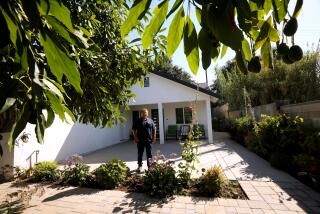81% of Californians Live in Cities, State Agency Says
SACRAMENTO — Forget the home in the country. Californians are increasingly becoming big-city dwellers.
Nearly 81% of California residents live in incorporated communities, up from just over 75% in 1970, the state Department of Finance reported Tuesday.
And the trend is continuing. Overall, city populations grew 1.74% last year, compared with a 1.26% increase in unincorporated areas and 1.65% statewide, the department said.
“It’s not really a surprise,” said David Jones, a spokesman for the League of California Cities. “People want to be where there are services. Municipalities provide a much wider range of services.”
The state’s population climbed to 33.8 million in 1998, according to the report.
Fifty-six of the state’s 471 cities have at least 100,000 residents, compared with only 20 cities with those numbers in 1970.
Eight cities make up a quarter of the state’s population: Los Angeles, San Diego, San Jose, San Francisco, Long Beach, Fresno, Oakland and Sacramento.
John Landis, associate professor of city and regional planning at UC Berkeley, attributes the trend toward city dwelling to two things: growth in the heavily urbanized areas of Southern California and efforts in some counties to concentrate growth.
Such practices save open space and reduce the cost of government services, he said.
Downey City Manager Gerald Caton said a population shift toward younger, growing families and the attraction of city services helped make his community the latest to join what he calls California’s “100,000-member club.”
Los Angeles remains the state’s largest city, with nearly 3.8 million residents, up 1.8% in 1998. San Diego is second with almost 1.3 million citizens, an increase of 2.4%
Vernon, a Los Angeles County community with 85 residents, is the smallest town in California.
Taft and Corcoran, two southern San Joaquin Valley cities, had the biggest percentage increases in residents last year. Taft’s population jumped 30.2% to 8,950, while Corcoran’s increased 21.2% to 20,900. In both cases, officials cited prison expansions as the reasons for the big increases.
More to Read
Get the L.A. Times Politics newsletter
Deeply reported insights into legislation, politics and policy from Sacramento, Washington and beyond. In your inbox three times per week.
You may occasionally receive promotional content from the Los Angeles Times.










